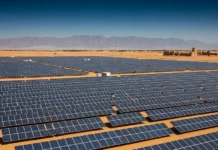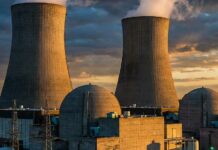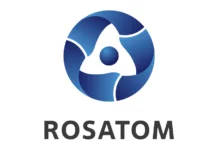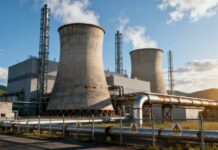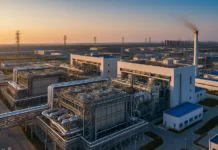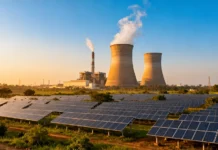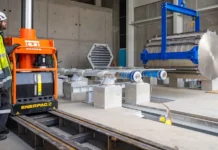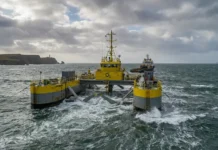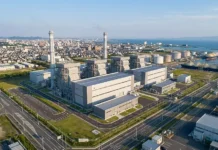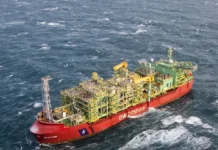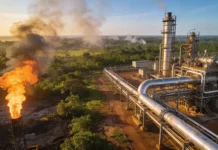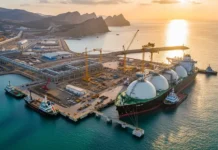Beilungang is the largest coal fired plant in operation in China, and was long a key project for the country. It is one of the largest construction projects in the province’s history, and was the first coal-fired plant in China constructed with loans from the World Bank. All the major items of equipment were procured by international bidding.
Finance came from official sources and the World Bank. Main orders were placed in 1995 and site construction began in October 1996. Estimated investment is at least $1.8 billion, $5.5 million of which came from the World Bank.
The investors formed the Zhejiang Beilun Power Generation Co., Ltd. as owner. The project construction was contracted to Zhejiang Provincial Electrical Power Construction Engineering Company. The Chinese Electrical Power Project Construction Consulting Company supervised and controlled the project. Ebasco Overseas Corporation in United States, Tokyo Electrical Power Service Co., Ltd. in Japan and Fichtner Consulting Engineers GmbH in Germany consulted for the project construction.
PLANT MAKE-UP
The plant consists of three 600MW coal-fired units. Japanese trading and engineering group Mitsui & Co. led the project consortium. A consortium comprising Sargent and Lundy, Mitsui and Ishikawajima-Harima Heavy Industries Co. Ltd. (IHI) supplied the boilers. Sargent & Lundy’s scope included engineering and balance-of-plant for the boiler island, and engineering of plant control and instrumentation. It also shared responsibility for equipment procurement. A separate consortium of Mitsui and Toshiba supplied the turbine generators. Construction was performed by Zhejiang Electrical Power Bureau.
Ebasco Services Inc. had previously been awarded feasibility engineering and consulting contracts for Beilungang thermal power plant units three and four in 1993. In the same year, Raytheon Engineers & Constructors acquired the operating assets of the power generation business of Ebasco. Ebasco’s presence in China dates back to 1927 when the company owned and operated the Shanghai Power company; the company re-entered the Chinese power market in 1980.
UNIT TWO, BEILUNGANG POWER PLANT
Unit two of Beilungang power plant was completed in 1994. GEC-Alsthom supplied the 600MW steam generator and Babcock and Wilcox supplied and commissioned the boiler and all auxiliary equipment for the boiler island.
A fatal explosion of a generator at the Beilungang power station occurred early in 1993 killing 23 people, although no details of the cause of the accident or the equipment involved were released.
CHINESE POWER DEVELOPMENT
In the mid-1990s Zhejiang province on the east coast of China began an accelerated programme of transportation and infrastructure development to keep abreast of its economic growth. The work included new construction projects on airports, railways, roads, docks (including China’s biggest dry-cargo dock at Beilungang Port) and electric power production and distribution facilities.
More recent comments by Chinese authorities suggest that the rate of construction of large power plants in China will be slower over the next few years and that attention will focus on improving regional grids and national connectivity. There have been signs that fewer new efficient and environmentally clean plants will now be built in China, although some sectors, including hydro and LNG-fired, may have characteristics suited to current needs.



